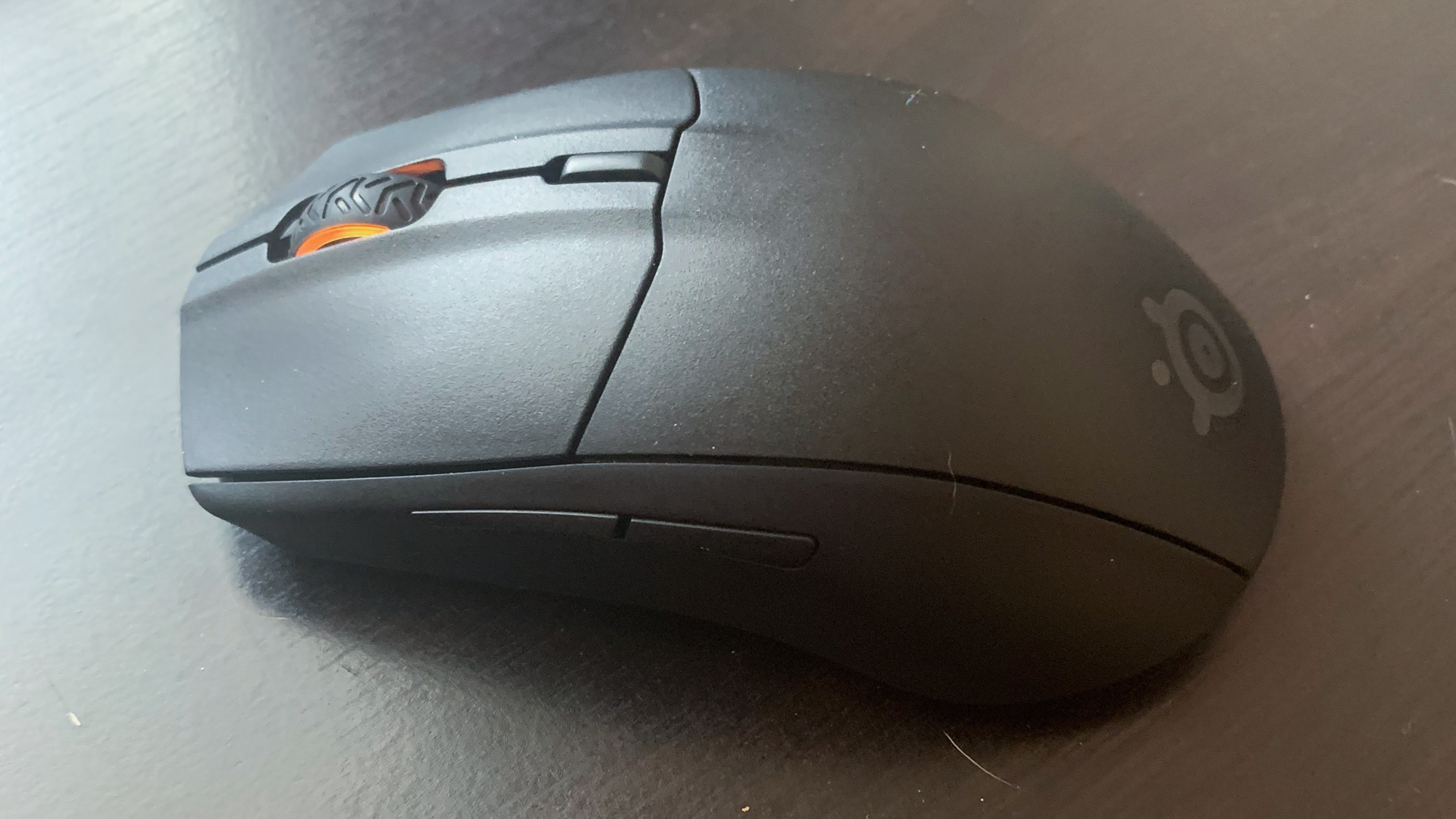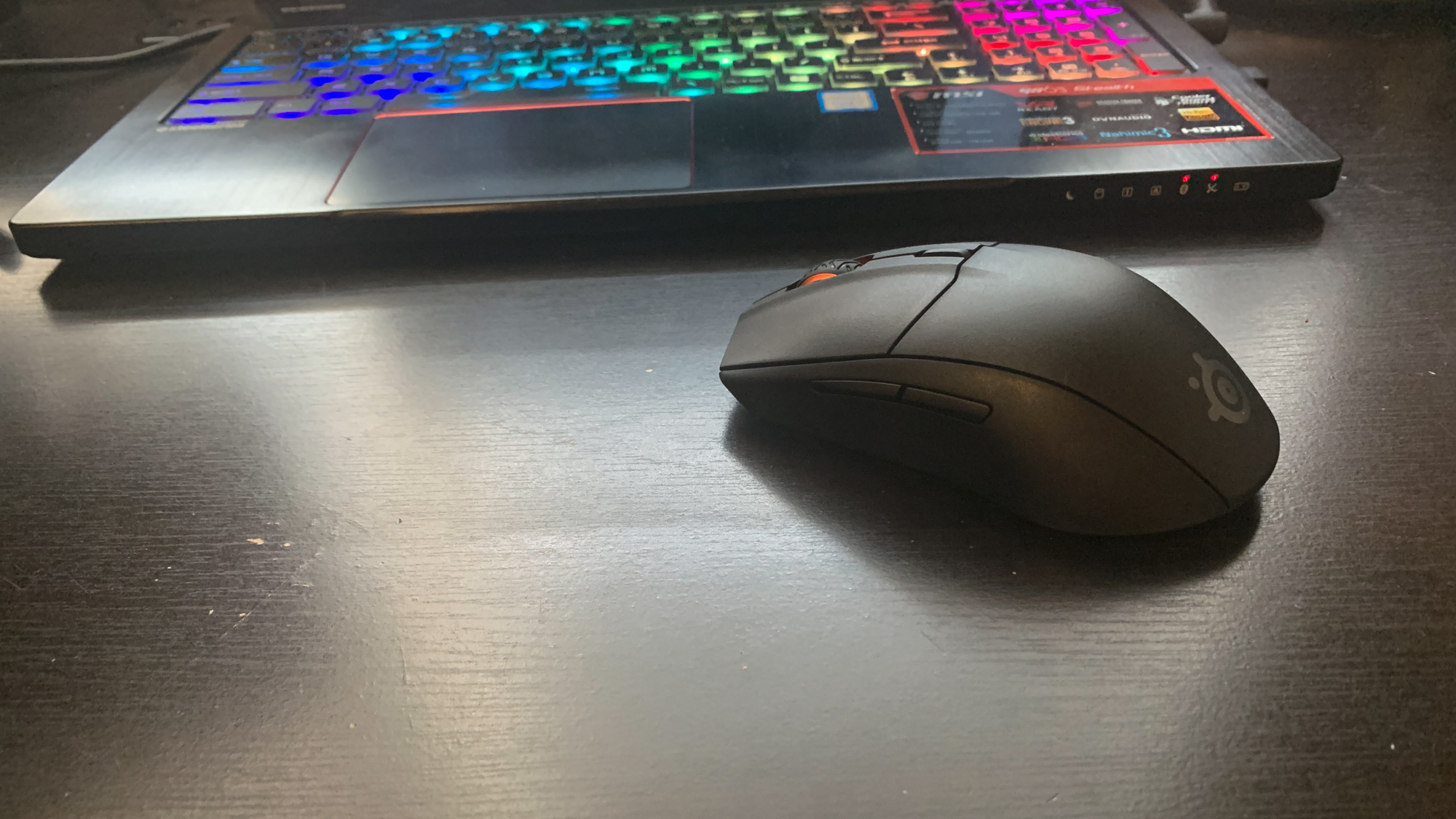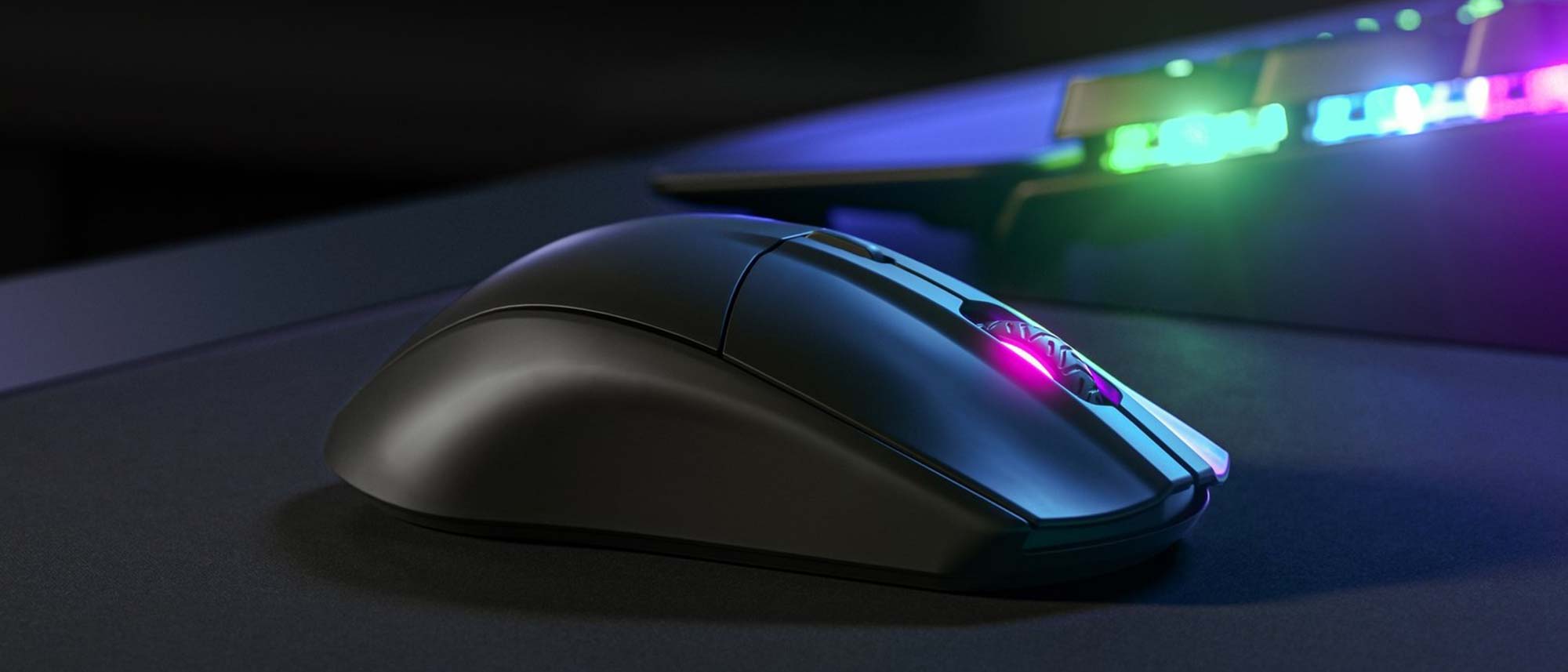Tom's Guide Verdict
The SteelSeries Rival 3 Wireless isn't the flashiest mouse around, but it gets the job done — when it works.
Pros
- +
Competitive pricing
- +
Easy to set up
- +
Straightforward software
Cons
- -
One tiny RGB zone
- -
Technical difficulties
Why you can trust Tom's Guide
Max DPI: 18,000
Buttons: 6
Size: 4.7 x 2.3 x 1.5 inches
Weight: 3.7 ounces
At $50, the SteelSeries Rival 3 Wireless defies expectations. Wireless gaming mice have their advantages and disadvantages, but one factor that usually lands solidly in the “disadvantage” column is the pricing. It’s not unusual to see these accessories go for more than $100, and those that run cheaper often compromise on the kinds of features gamers expect.
The SteelSeries Rival 3 Wireless, on the other hand, offers programmable buttons, adjustable DPI and two different wireless modes. That said, the Rival 3 Wireless isn’t as flashy as some of its competitors, with only one small RGB zone under the scroll wheel and a fairly straightforward design. What’s more concerning is that getting the button customization to work took some troubleshooting, and these options don’t work in the battery-saving Bluetooth mode.
SteelSeries Rival 3 Wireless design
We previously called the wired version of the SteelSeries Rival 3 “unassuming,” and that description works just as well for the SteelSeries Rival 3 Wireless iteration. It’s plastic with a matte black finish, which might as well be considered the design default for gaming mice. The Rival 3 Wireless is very sleek overall, with its two side buttons and scroll wheel barely sticking out from the mouse’s overall profile. The device feels nice and cool in your palm, even after hours of gameplay.

The right-handed Rival 3 Wireless is powered by two AAA batteries (included), which go under the removable hood of the mouse. This hidden section, which is easy to access, also has a storage slot for the wireless dongle, making the peripheral perfect for travel.

The on/off switch is on the bottom, and you can use that same switch to toggle between the 2.4 GHz and Bluetooth wireless options. Also on the bottom of the mouse are smooth, shiny feet that help this mouse glide around without a hitch, along with the responsive SteelSeries TrueMove Air optical sensor.

Measuring 4.7 x 2.3 x 1.5 inches, the Rival 3 Wireless is fairly compact without going into “mini” territory. Because of the AAA batteries inside, it does have a bit more heft than you’d find in a wired mouse — around 3.7 ounces, which certainly isn’t a dealbreaker. Overall, the mouse works well for claw and fingertip grip styles, though the slimmer buttons don’t offer that satisfying, tactile clickiness you might find in larger mice.
SteelSeries Rival 3 Wireless features
As its name implies, the defining feature of the SteelSeries Rival 3 Wireless is its wireless connectivity. Boasting SteelSeries’ Quantum 2.0 Wireless technology, the mouse works in either 2.4 GHz or Bluetooth mode, and both are extremely easy to set up. For 2.4 GHz, all you have to do is plug in the tiny USB dongle and set the bottom switch to the appropriate setting, then you’re good to go. Bluetooth requires opening up your computer or device settings and pairing it with the mouse, which we were able to do without any complications.

This mouse works just fine as a plug-and-play device, but to change the functions of the six programmable buttons and the scroll wheel, you’ll have to use the SteelSeries Engine 3 software. When compared to Razer’s sometimes convoluted software, Engine 3 is refreshingly straightforward. You can link your Rival 3 Wireless to individual games, create up to five different profiles and reprogram buttons in an instant. There’s even a macro editor for further customization.
The Rival 3 Wireless has a DPI range of 100 to 18,000, which you can adjust incrementally with a small button underneath the scroll wheel. You can also use the software to switch among five DPI levels in a single click, or get into the nitty-gritty by adjusting acceleration and deceleration. For such a simple interface, the Engine 3 software offers surprising depth.
Unfortunately, I also ran into some issues with the software, as well as getting my reprogrammed buttons to work properly. Engine 3 required multiple updates, which sometimes failed to go through the first time. The program also told me that I needed to re-pair my mouse in Bluetooth mode, even though the mouse was, at that time, working fine on Bluetooth settings. Getting the button changes to take effect required me to restart my laptop, unplug the dongle, and fiddle around for a bit, but eventually it all came together.
SteelSeries Rival 3 Wireless performance
I ran the SteelSeries Rival 3 Wireless through a marathon session of Sid Meier’s Civilization VI, stopping several times to back out and reprogram or test different features. The mouse proved comfortable and capable for long gameplay sessions, and it was nice to not have to worry about a cord getting tangled up during my quest for world domination. After the trial and error described in the previous section, I was able to reprogram the Rival 3 Wireless with my preferred Civ controls. However, the customizable options work only in 2.4 GHz wireless mode, not Bluetooth. Impressively, there was no discernable latency or lag over either of the wireless channels, save for a second or two when the mouse is waking up from sleep after a period of disuse.
I found the DPI toggle most useful when playing Fall Guys, as the higher DPI settings tended to make the camera move around too quickly for my liking. It’s great to be able to adjust this without having to exit the game and open up the SteelSeries software, and should serve competitive players well.
SteelSeries Rival 3 Wireless bottom line
If you’re looking for the convenience of a wireless mouse without the high price, the SteelSeries Rival 3 Wireless is a great option. It’s not flashy, but it’s smooth, sleek and works as intended — most of the time. Despite the comparatively low price and straightforward design, the reprogrammable buttons offer countless customization options, even if you have to fight with the software a bit first. For cost-conscious gamers, a bit of troubleshooting is a small price to pay for such a solid wireless mouse.

Sarah is a writer, editor and consultant with a focus on video games and pop culture. Alongside Tom's Guide she has contributed to publications including IGN, Polygon, Variety, NBC News, Nerdist and Ars Technica.

